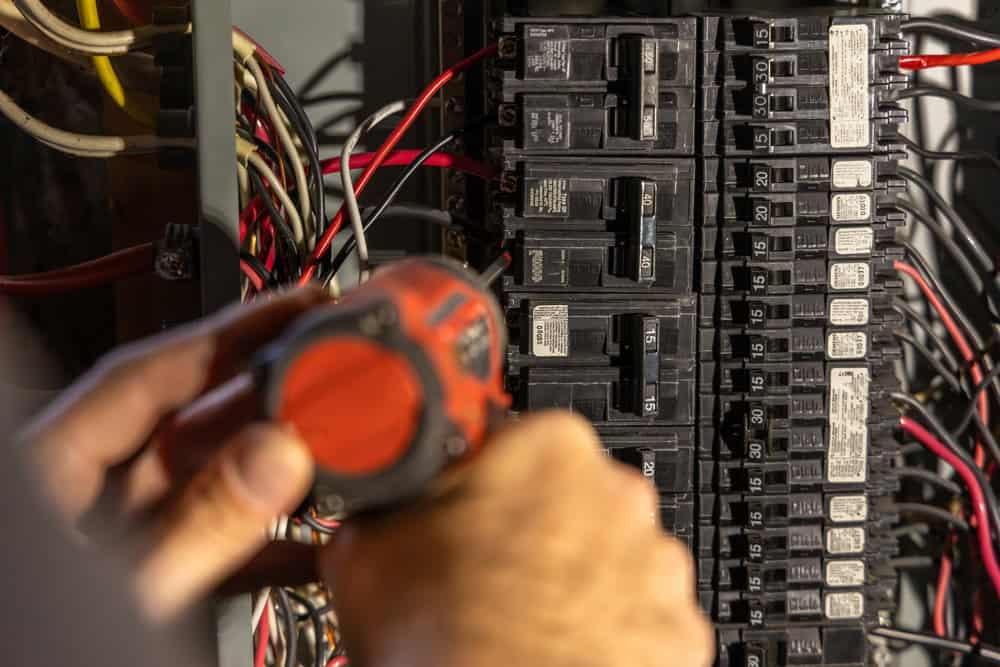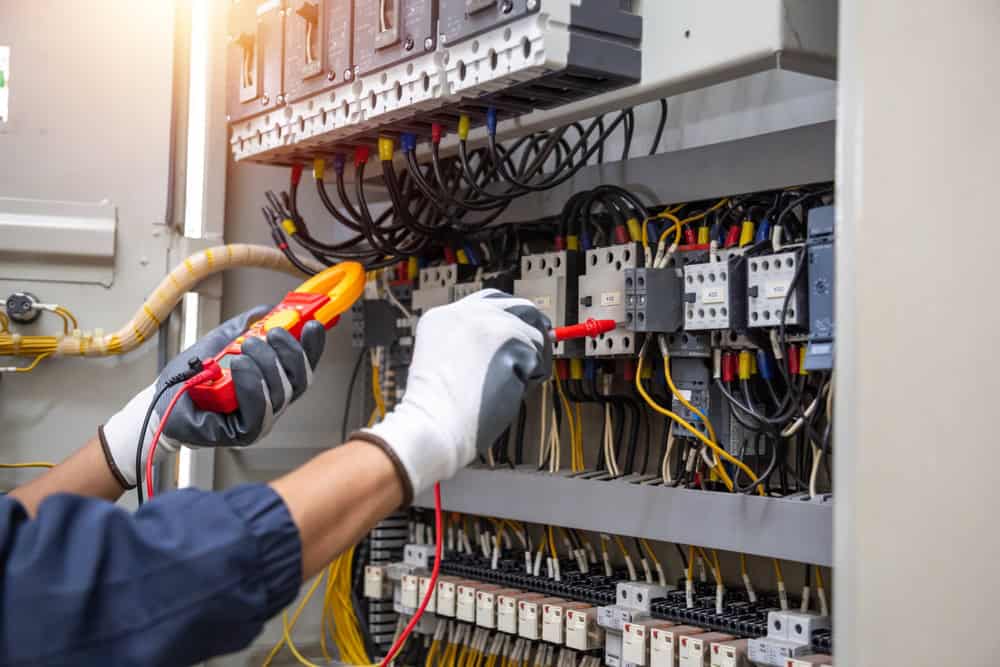Electricity 101: Understanding The Service Panel

Many homeowners who are unfamiliar with construction and wiring are timid when it comes to electrical work. It makes perfect sense to have a healthy respect for electricity—it can be dangerous if you don’t understand it.
To give you confidence and a little knowledge to help you discuss electrical problems with an electrician, let’s explore how the service panel (or panel box) controls your home’s electrical system.
Functions of the Service Panel
Homeowners interact with the service panel for:
- Shutting Off Power: Use the main breaker to turn off power to the entire house.
- Resetting Tripped Breakers: Circuit breakers trip to stop the flow of electricity when circuits are overloaded.
- Powering Individual Circuits: Turn off specific circuits during electrical work.
Only qualified electricians should perform complex tasks like adding new circuits.

Understanding Circuit Breakers
- Purpose: Circuit breakers prevent overheating by tripping when the power demand exceeds their rated capacity.
- Amperage Ratings: Printed on each breaker, these ratings indicate the circuit’s electrical flow capacity. For instance:
- 15-amp circuits: For lights and outlets.
- 30- or 50-amp circuits: Dedicated circuits for appliances such as dryers or ranges, with larger diameter wiring.
Reset breakers by switching them fully to “OFF” and then back to “ON.” Fuses in older panels must be replaced with same-rated ones. Never use higher-rated fuses, as this may overheat the wiring.

Types of Circuit Breakers
- Single-Pole Breakers: Provide 120 volts for standard circuits.
- Double-Pole Breakers: Provide 240 volts for high-energy appliances.
- Ground-Fault Circuit Interrupters (GFCIs): Trip quickly to prevent electric shock when an imbalance in current occurs, often required in wet areas (kitchens, bathrooms, garages).
- Arc-Fault Circuit Interrupters (AFCIs): Prevent fire hazards by shutting down circuits in the event of arcing due to disconnected wires.
Note: GFCI outlets (with “Test” and “Reset” buttons) offer similar protection to GFCI breakers.

Identifying and Preventing Issues
- Tripped Breakers: Plug fewer devices into the circuit to reduce demand. Frequent tripping may indicate faulty wiring—consult an electrician.
- Maintenance: Keep the panel accessible, free from obstructions, and ensure the circuit legend inside the panel door is accurate.
- Safety Tips:
- Know the service panel location and keep the area clear.
- Store a flashlight nearby for power outages.
- Contact an electrician if you notice scorch marks, rust, or other damage on the panel.
- Avoid inserting metal objects into the panel or removing its dead front/cover.
Electrical work should only be performed by qualified individuals to prevent safety hazards. Proper knowledge and care ensure a safe and efficient electrical system.
